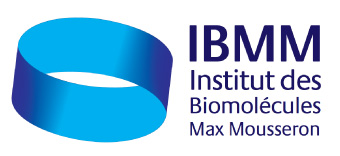Highly activated magnesium(I) compounds: powerful reagents for small molecule activations
Séminaire Chimie ED459
Prof. Cameron
[rouge]SÉMINAIRE ANNULÉ et reporté à une date ultérieure[/rouge]
Le Jeudi 24 Novembre 2022 à 14h
CNRS, Amphithéâtre Balard (bâtiment Balard RdC, 1919 route de Mende)
Date de début : 2022-11-24 14:00:00
Date de fin : 2022-11-24 15:30:00
Lieu : CNRS amphi Balard
Intervenant : Prof. Cameron
School of Chemistry, Monash University, Melbourne, Australia
(annulation en raison d’une imortante avarie SNCF qui a empêché la venue du conférencier à Montpellier)
Since the synthesis of the first stable magnesium(I) compounds was achieved in 2007, the unique properties these species possess has lent them to use as versatile reducing agents in both organic and inorganic synthetic protocols.[1] The products of such reactions are often inaccessible using more classical reducing agents. We have recently developed several classes of highly activated magnesium(I) and “masked” magnesium(I or 0) systems, and have shown these to be markedly more reactive than their established counterparts.[2-5] In this lecture it will be shown that these compounds are powerful reagents for the “transition metal-like” activation of catalytically relevant small molecules and inert arenes (e.g. CO, H2, C2H4, N2, C6H6) (Figure 1). In several cases, small molecule activations are redox reversible under mild conditions, which gives hope for the eventual incorporation of magnesium(I) compounds into catalytic cycles.
(Figure 1 : see illustration in attached PDF abstract+bio)
References
1. C. Jones, Nat. Rev. Chem. 2017, 1, 0059.
2. A. J. Boutland, A. Carroll, C. A. Lamsfus, A. Stasch, L. Maron, C. Jones, J. Am. Chem. Soc. 2017, 139, 18190.
3. K. Yuvaraj, I. Douair, A. Paparo, L. Maron, C. Jones, J. Am. Chem. Soc. 2019, 141, 8764.
4. A. Paparo, K. Yuvaraj, A. J. R. Matthews, I. Douair, L. Maron, C. Jones, Angew. Chem. Int., 2021, 60, 630.
5. D.D.L. Jones, L. Douairm I. Maron, C. Jones, Angew. Chem. Int. 2021, 60, 7087.
Biosketch. Cameron Jones was born in Perth, Australia. He completed his BSc(Hons) degree at the University of Western Australia in 1984. From 1985–1987 he worked as a Research Officer at the University Department of Surgery, Royal Perth Hospital. His PhD degree was gained from Griffith University, Brisbane, under the supervision of Professor Colin L. Raston in 1992, for work on Group 13 metal hydrides. He then moved to a postdoctoral fellowship (1992–1994) at Sussex University under the supervision of Professor John F. Nixon FRS. From 1994 he held a lectureship at The University of Wales, Swansea before moving to a Readership in Inorganic Chemistry at Cardiff University (1998). There, he was promoted to a Personal Chair in Inorganic Chemistry in 2002. At Cardiff he founded (2004) and co-directed The Centre for Fundamental and Applied Main Group Chemistry. In 2007 he moved to Monash University, Melbourne, as an ARC Australian Professorial Fellow and Professor of Chemistry. He is currently the RL Martin Distinguished Professor of Chemistry at that institution, in addition to being the Director of the Monash Catalysis Initiative, which he co-founded in 2015. Cameron was elected as a Fellow of the Australian Academy of Science in 2017.
(see list of fellowships and prizes in attached PDF abstract+bio)
Contact local ICGM : Dr. Danielle
